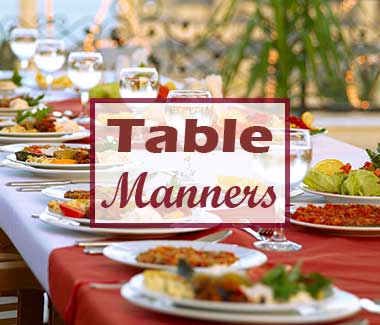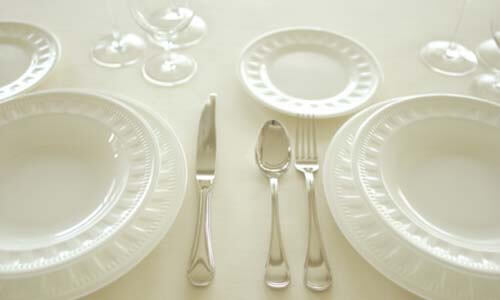Restaurant Personnel
Who’s Who in the Restaurant
Proprietor
- business suit, dress, or chef’s white outfit
- overall supervision
- address: unless you know the owner or the restaurant bears the proprietor’s first name, use the Mr., Ms. Honorific.
Maitre D’
- Black tie and tuxedo
- takes you reservation, greets you on arrival, escorts you to the table. Supervises the dining-room staff. Also known as the head waiter.
- Address: First name. If it is unknown, say “maitre d’”
Captain
- Black or white tie, white or colored diner jacket, and black pants. Sometimes a tuxedo.
- Suggests entrees, takes your order, serves and prepares table side dishes. If no sommelier, presents the wine list. Oversees about six waiters. Occasionally presents the bill.
- Address: first name. or, if unknown, say “Captain.”
Sommelier
- Black outfit. Often sports a flat silver cup (tastevin) dangling from a long, thick silver necklace.
- Presents wine lists, offers suggestions, answers your oenological questions, brings and uncorks the wine, pours it and waits for your approval, and refills the glasses when necessary.
- Address: “Sommelier” (sohm-meh-l’yeh’) or “wine steward.” Use given name if known.
Waiter
- White or colored coat (usually less formal and cut shorter than the captain’s) or long-sleeved waistcoat. Sometimes wears epaulets. May have linen wrapped around waist.
- Your primary contact. Fetches and serves the routine dishes and, possibly, beverages. Usually brings the check. Supervises the busboy.
- Address: Waiter. Use given only if it has been announced or if the two of you are acquainted.
Busboy
- Sleeveless waistcoat of no sartorial splendor.
- sets table, adjust place settings, refills water glasses, removes dirty tableware.
- Do not speak to the busboy. Direct your requests through the waiter.
Who’s who in the kitchen
Executive chef or “chef du cuisine” - head cook;
“sous-chef” (underchef) - second in command; and
The “chefs de partie” (specialized cooks).
- “Chef poissonnier” (fish cook)
- “Chef saucier” (sauce cook)
- “Chef rotisseur” (roast cook)
- “Chef patissier” (pastry cook)
waiters
Much of the success of your meal hinges on your interaction with your waiter or waitress. For better or worse, servers are quick to introduce themselves today but even if they don't, a polite diner will treat them with respect. "Respect" doesn't mean thanking a waiter or waitress for every little task performed, but the occasional expression of gratitude is definitely in order.
Treating a server as a robot is unforgivably rude, and an imperious or condescending manner shows you not as superior but small. In brief, do the following:
Respond with a "hello" when the server first greets you, not a demand ("We need water!").
Answer her questions with actual words, not grunts.
Add "please" to your requests.
Look at her as she recites the specials, and don't grimace if she describes something you don't like.
Before you order, make sure everyone else at the table is ready to order.
When you want your plate to be cleared, signal by placing your knife and fork in the "I'm finished" position-beside each other diagonally on the plate.
Call the server by catching his eye and giving him an expectant look. If he's some distance away, you can raise your hand to chin level, index finger pointing up.



